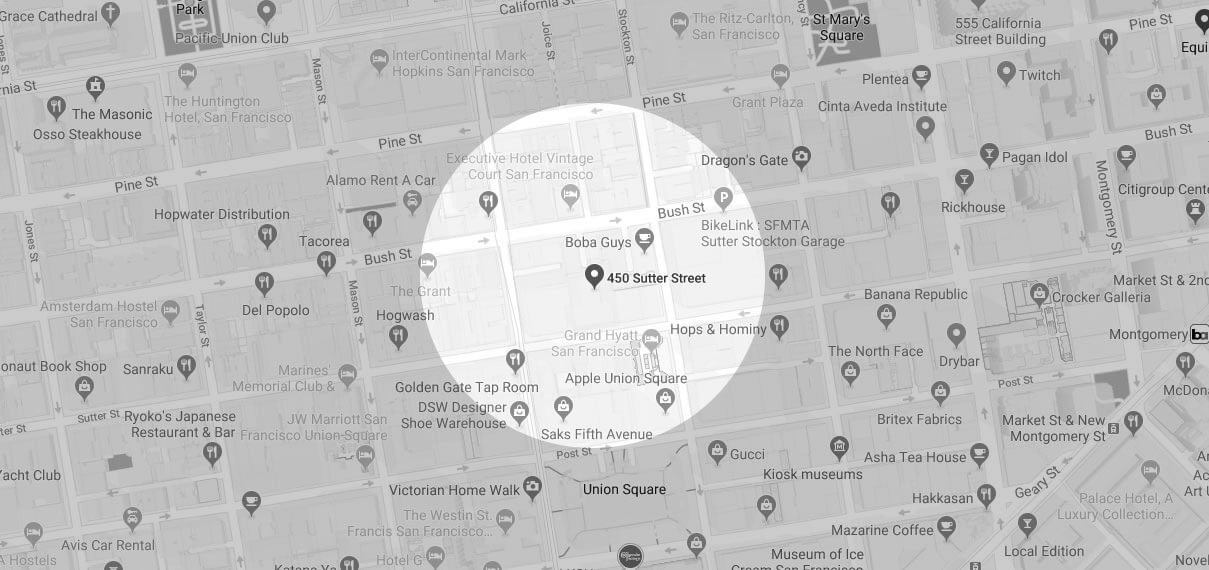By Dr. Maria Rodriguez, My Dentist San Francisco
As an experienced dentist specializing in orthodontics at My Dentist San Francisco, I have frequently encountered a variety of orthodontic emergencies. These situations, while not life-threatening, can cause significant discomfort, anxiety, and can disrupt ongoing treatment plans. In this comprehensive guide, I will delve into the nuances of managing orthodontic emergencies, offering insights from my professional experience.

Understanding the Scope of Orthodontic Emergencies
Orthodontic emergencies can range from minor issues, like loose brackets, to more severe cases such as injuries resulting from trauma to braces. Each type of emergency presents unique challenges and necessitates a tailored approach for management. As a dental professional, it is crucial to accurately assess the situation and provide prompt, effective treatment to alleviate pain and ensure the continuity of the orthodontic plan.
The Role of Timely Intervention
Immediate attention in the case of orthodontic emergencies is not just about pain relief; it's also about preserving the integrity of the orthodontic work already in place. Delays in addressing these issues can lead to complications, potentially extending treatment time and compromising results. Therefore, understanding the importance of timely intervention is paramount in orthodontic care.
Preparing Patients for Emergencies
A significant aspect of my practice involves educating patients on potential orthodontic emergencies. This includes instruction on identifying emergencies, performing basic first-aid for orthodontic appliances, and understanding when to seek professional help. Empowering patients with this knowledge is key to ensuring they are prepared to handle emergencies should they arise.
Importance of Professional Guidance
While some orthodontic issues can be temporarily managed at home, professional evaluation and treatment are often necessary. As an orthodontist, I provide not only immediate care but also long-term solutions to prevent recurrence, ensuring that each patient's treatment progresses smoothly and effectively.
Common Orthodontic Emergencies and Their Management
Dealing with Broken or Loose Brackets
Broken or loose brackets are a common occurrence in orthodontic treatment. They can cause discomfort and hinder the progress of tooth alignment. When a bracket breaks or becomes loose, it's important for patients to contact their orthodontist immediately for advice or an appointment. In the interim, applying dental wax to the affected area can help alleviate discomfort.
Managing Protruding or Broken Wires
Orthodontic wires can sometimes break or protrude, leading to discomfort or injury to the cheeks, gums, or tongue. In such cases, patients can use the eraser end of a pencil to gently push the wire back into place or place dental wax over the end to prevent injury. However, professional intervention is necessary to properly adjust or replace the wire.
Lost Aligners or Retainers
Losing aligners or retainers can disrupt the orthodontic treatment process. It is important for patients to contact their orthodontist as soon as possible in such cases. Depending on the treatment stage, the orthodontist may advise wearing a previous set of aligners or a temporary retainer until a replacement can be provided.
Trauma to the Mouth and Braces
Trauma to the mouth, whether from sports injuries or accidents, can lead to damaged braces and require immediate dental attention. Patients should contact their orthodontist or seek emergency dental care if they experience severe pain, bleeding, or noticeable damage to their braces or teeth.
Advanced Pain Management Techniques in Orthodontic Emergencies
Utilizing Over-the-Counter Pain Relief
For managing pain associated with orthodontic emergencies, over-the-counter medications like ibuprofen or acetaminophen can be effective. It's important for patients to use these medications according to the prescribed dosage and consider any personal health contraindications. Such medications are particularly helpful in managing pain after adjustment appointments or minor injuries to the oral tissues caused by orthodontic appliances.
Exploring Home Remedies for Comfort
Several home remedies can provide relief from orthodontic discomfort. Rinsing the mouth with warm salt water can soothe irritated gums and oral tissues, while cold compresses applied externally can help reduce swelling and alleviate pain. I often recommend patients to consume soft foods post-adjustment to minimize discomfort while eating.
Recognizing the Need for Professional Care
Some orthodontic emergencies require professional care, especially if the pain is unmanageable or if there's significant injury to the mouth. It's important for patients to understand when to reach out to their orthodontist for an emergency appointment. Timely professional intervention is crucial in these scenarios to prevent further complications.
Long-Term Strategies for Managing Discomfort
Orthodontic treatment can sometimes be accompanied by prolonged discomfort. In such scenarios, it is essential to have an open dialogue with the orthodontist about pain management strategies. This could include adjustments in the treatment plan, the use of additional pain relief methods, or scheduling more frequent follow-up visits to closely monitor and adjust treatment as necessary. This ongoing communication ensures that any discomfort is effectively managed while keeping the patient's overall oral health and treatment goals in focus.
Emergency Care for Different Types of Orthodontic Appliances
Special Considerations for Traditional Metal Braces
Metal braces, while sturdy, can still be susceptible to emergencies such as loose brackets or broken wires. In such situations, it's crucial to avoid any DIY repairs and instead cover any sharp edges with dental wax and contact the orthodontist for an appointment. Patients with metal braces should also be cautious about their diet and activities to prevent damage to their braces.
Handling Emergencies with Ceramic Braces
Ceramic braces require extra care in emergencies due to their more fragile nature compared to metal braces. If a ceramic bracket breaks, it can lead to sharper edges than metal brackets, posing a higher risk of injury to the mouth's soft tissues. Immediate professional attention is needed to replace or repair the broken bracket and ensure the continued effectiveness of the treatment.
Managing Issues with Lingual Braces
Lingual braces, being positioned on the backside of teeth, present unique challenges in emergencies. Issues such as loose brackets or discomfort are harder for patients to manage due to the braces' placement. In cases of emergencies with lingual braces, contacting the orthodontist promptly for professional intervention is usually necessary.
Addressing Clear Aligner Emergencies
Emergencies with clear aligners, like Invisalign, often revolve around lost or damaged aligners. In such instances, immediate communication with the orthodontist is crucial to determine the best course of action, which might involve moving to the next set of aligners or using a previous set temporarily. Keeping past aligners can be a wise precaution for such situations.
Preventive Strategies and Routine Maintenance
Importance of Regular Care and Maintenance
Maintaining orthodontic appliances through regular care is essential to prevent emergencies. This includes diligent cleaning of the appliances and being mindful of dietary choices to avoid damaging braces or aligners. Routine maintenance is a key factor in ensuring the smooth progress of orthodontic treatment.
Protective Measures in Sports and Other Activities
For patients engaged in sports or activities that pose a risk of facial injury, wearing a mouthguard is strongly recommended. Mouthguards can be especially tailored for those with braces, providing an extra layer of protection against trauma to the mouth and orthodontic appliances.
The Role of Regular Dental Check-Ups
Regular dental check-ups and orthodontic appointments play a crucial role in preventing orthodontic emergencies. These visits allow the orthodontist to monitor the progress of treatment, make necessary adjustments, and preemptively address any issues that could lead to emergencies.
Educating Patients for Self-Care
An important aspect of preventing orthodontic emergencies is patient education. Patients should be well-informed about the proper use and care of their orthodontic appliances, including cleaning techniques, dietary recommendations, and how to handle minor issues at home.
Advanced Orthodontic Emergency Protocols
In-Office Emergency Procedures
In my practice, we have established specific protocols for managing various types of orthodontic emergencies. This includes immediate assessment and treatment of damaged appliances, pain management, and adjustments to treatment plans as needed. Having a structured approach ensures efficient and effective care in emergency situations.
Collaboration with Other Dental Specialists
Some orthodontic emergencies may require the involvement of other dental specialists, such as oral surgeons or endodontists. In such cases, a collaborative approach is essential for comprehensive care. This may involve referrals to other professionals and coordinated treatment plans to address complex issues.
Importance of Post-Emergency Follow-Up
Following up with patients after an orthodontic emergency is crucial for ensuring their comfort and the ongoing effectiveness of their treatment. This includes monitoring the healing process, making any necessary adjustments to the orthodontic appliances, and reassessing the overall treatment plan.
Training and Preparing Dental Staff
In my practice, we place great emphasis on training our dental staff to effectively handle orthodontic emergencies in San Francisco. This training includes recognizing different types of emergencies, providing initial care, and understanding when to escalate the situation to the orthodontist. A well-prepared team is critical for providing high-quality care in emergency situations.
Final Thoughts
Navigating orthodontic emergencies requires a comprehensive understanding of various orthodontic appliances, effective pain management strategies, and a proactive approach to prevention and maintenance. My commitment as a dental professional is to ensure that my patients are well-equipped to handle any orthodontic emergency that may arise, and to provide them with the necessary support and care to maintain the integrity and progress of their treatment. Through this guide, I hope to impart valuable knowledge and reassurance to patients undergoing orthodontic treatment, ensuring a successful and comfortable journey towards achieving their ideal smile.



